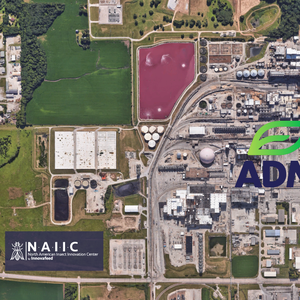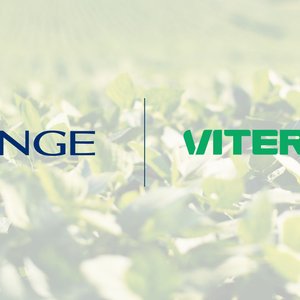Fish nutritionist Rick Barrows (right) captures trout from 6-foot-diameter tanks for technician Jason Frost to weigh and measure. These trout were fed fishmeal-free, plant-based feed.
A process that improves the nutritional value of barley for use in aquafeed has been developed by scientists at the U.S. Department of Agriculture (USDA) and Montana Microbial Products LLC (MMP) of Missoula, Montana.
Barley typically contains about 10 to12 percent protein, but 40 to 60 percent protein is needed in diets of carnivorous fish like rainbow trout and salmon. The new enzymatic process patented by the Agricultural Research Service (ARS) and MMP concentrates protein by removing the carbohydrates in barley and turning them into an ethanol coproduct, utilizing all the nutrients in the grain.
ARS is USDA\'s principal intramural scientific research agency, and this research supports the USDA priority of promoting international food security.
The new high-protein product produced by this technology should help fill the gap for more plant-based protein sources as alternatives to fishmeal, according to fish physiologist Rick Barrows, with the ARS Small Grains and Potato Germplasm Research Unit in Aberdeen, Idaho. In addition, barley protein concentrate has less variability in composition and is less expensive than most fishmeals.
Barrows, who works in Bozeman, Montana, and his team tested barley protein concentrate in rainbow trout and found digestibility—the percentage of nutrients available to the fish—to be as high as 95 percent.
To evaluate the effects on growth in other fish, research leader William Wolters and fish physiologist Gary Burr, at the ARS National Cold Water Marine Aquaculture Center in Franklin, Maine, fed diets containing barley protein to Atlantic salmon. Most salmon diets are about 40 percent protein, scientists say. During a 4-month feeding trial, salmon were fed diets of either 11 percent or 22 percent barley protein concentrate. These fish were compared to salmon fed a standard commercial fishmeal diet. Wolters and Burr found no significant differences in growth among the three groups of fish. However, fish fed the diet containing 22 percent barley protein concentrate had significantly greater energy retention—34 percent—than the fish fed the other diets.
“Energy retention refers to how much energy we are putting into the fish and how much energy is staying in the fish,” Burr said. “Fish that have higher energy retention are using the feed more efficiently.”
This research, which was published online in the Journal of Applied Aquaculture in December 2013, showed that barley protein concentrate is a suitable feed ingredient for salmon and offers an alternative to the more expensive available sources, like fishmeal and soy protein concentrate. A recent collaborative study conducted at the University of Sterling in Scotland confirmed that barley protein is a nutritious feed ingredient for salmon, Wolters said.
Commercial Product Ahead
The barley-processing technology has been patented by ARS and MMP. The company received a license for the technology and recently built its first commercial prototype plant in Montana to produce the alternative fish-feed ingredient. The primary purpose is to produce barley protein for use in trout-feeding trials, said MMP’s Clifford Bradley.
“Our idea is to run this prototype plant for a year to 18 months and then build the first real commercial facility,” he adds. “The testing program will tell us how big we should build the first facility for the commercial product and what the market is going to look like.”
That market could be huge, according to Bradley. Aquaculture is still growing very rapidly, so the demand for high-protein ingredients is increasing at a steady rate. Typically, high-protein ingredients are selling at about $1,200 a ton or more, while fishmeal is about $1,600 a ton.
“It’s potentially a multibillion-dollar market,” he added.
Counting the Benefits
Besides being less expensive than other protein sources, barley protein concentrate offers other benefits. The phosphorus from bones and fins in fishmeal is not very digestible. “Most of the phosphorus from fishmeal goes into the water as a pollutant,” Bradley said. “Barley protein has much less phosphorus, but it is more digestible and better utilized by the fish.”
Barley protein concentrate adds to the toolbox of feed manufacturers, reduces cost, and gives farmers an alternative to fishmeal. It also creates additional markets for small-grain growers, Barrows said. For example, the new process is perfect for use with malting barley that is too high in protein, due to weather conditions or other factors, to sell to beer companies.
“We’re trying to develop plant-based ingredients for fish so we don’t have to rely on fishmeal from the ocean, which has reached its maximum harvestable level,” Barrows said. “This helps the environment. Also, if we could produce more fish in the United States with less costly, sustainable ingredients, the American consumer would ultimately benefit from a safe, abundant, and nutritious food source.”










